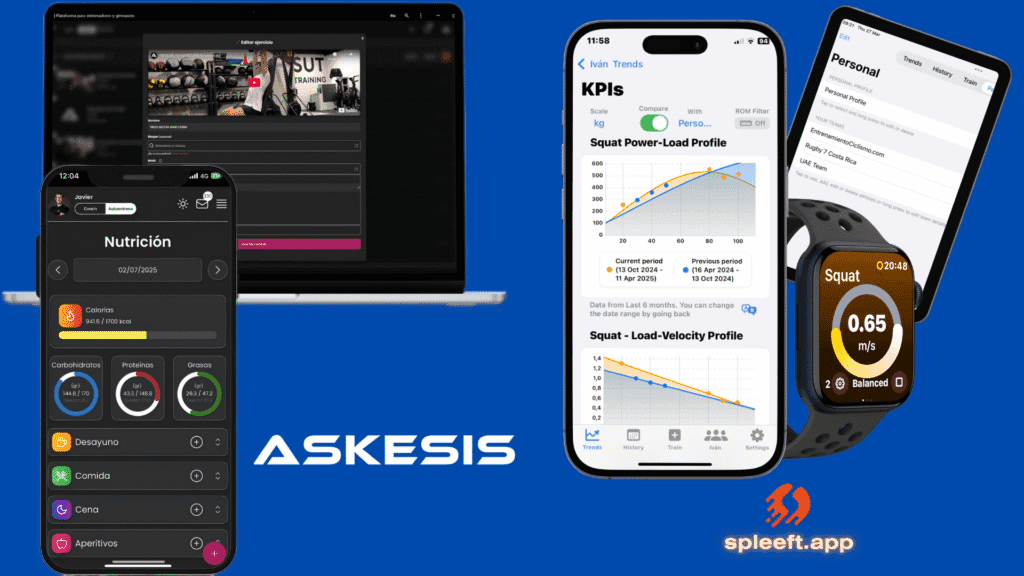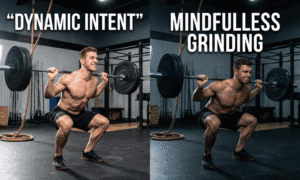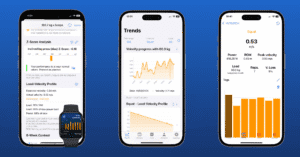Traditionally, strength-training programming has been based on three key variables: sets, repetitions, and loads (for example, a % of 1RM or a fixed number of reps to failure). At the same time, methodologies have emerged that, instead of focusing solely on load, utilise level of effort (e.g., “sets to failure”, “sets close to failure”, “sets leaving 1-2 reps in reserve”) or the concept of RIR (Repetitions In Reserve: how many reps you would have in hand before failure). These tools provide flexibility and allow the coach or athlete to adjust the load day by day.
DOWNLOAD SPLEEFT APP NOW FOR iOS, ANDROID AND APPLE WATCH!
Level of effort and RIR Methodologies
Level of effort (for example “sets to failure”, “sets near failure”, “sets leaving 1-2 RIR”) and RIR are widely used because they are practical, require no special equipment, and let the trainer or athlete adjust the load daily.
However—and here lies the first caution—they require experience: the athlete needs to correctly assess his/her fatigue, capacity to finish the set, and calibrate what “leaving 2 reps in reserve” means for them.
Disadvantages of These Methodologies
While they are useful, from our standpoint they present some limitations:
- They are subjective: the perception of effort or how many repetitions remain in reserve may vary widely between days, between individuals, and between exercises.
- They require experience from both athlete and coach to use them correctly and avoid estimation bias.
- They don’t always allow optimal autoregulation day-to-day: for example, if the athlete is more fatigued, they may lack the sensitivity to correctly adjust RIR or effort character.
- In practice, they may lead to variability in the actual load applied or to error in estimating how many reps are in reserve, which affects the optimisation of the stimulus.
Thus, we believe they should not be discarded, but there exist more objective methodologies that can help overcome some of these weaknesses: this is where prescribing via execution velocity comes in.
Introduction to the Velocity Based Training Methodology
Strength training based on velocity (often called Velocity-Based Training, VBT) posits that the speed of movement of the load during an exercise is strongly correlated with the relative intensity (% 1RM) and with accumulated fatigue. For example, one study found a very close relationship between mean propulsive velocity and %1RM in the bench press (R² = 0.98) [1].
In this way, monitoring execution velocity enables:
- Estimating what % of 1RM you are handling without needing to perform a maximal test every session.
- Adjusting the load in a more objective manner according to the athlete’s actual performance on that day (for example, if the athlete lifts more slowly, they are more fatigued; if faster, they are fresher).
- Controlling volume via metrics such as the velocity loss in the set (velocity-drop) that indicate internal fatigue, induced adaptations and required recovery. For example, studies show that stopping a set when velocity has decreased by ~20 % is more reliable than prescribing a fixed number of reps, since each individual may perform a different number of reps to failure with the same relative load [2].
A recent article sums it up this way [3]: “The main limitation of traditional strength training lies in knowing the level of effort the athlete is exerting… velocity monitoring contributes decisively to overcoming this limitation.”
How to Implement Velocity in Programming
To program via velocity, you must follow a logical progression:
Have a measurement tool
The first step to programme by velocity is measurement. Nowadays any athlete can get started thanks to apps like Spleeft which allow recording execution velocity via iPhone or Apple Watch. Spleeft is valid and reliable to measure barbell velocity and jump height. Once familiar with measurement you might upgrade to more professional devices in high-performance settings.
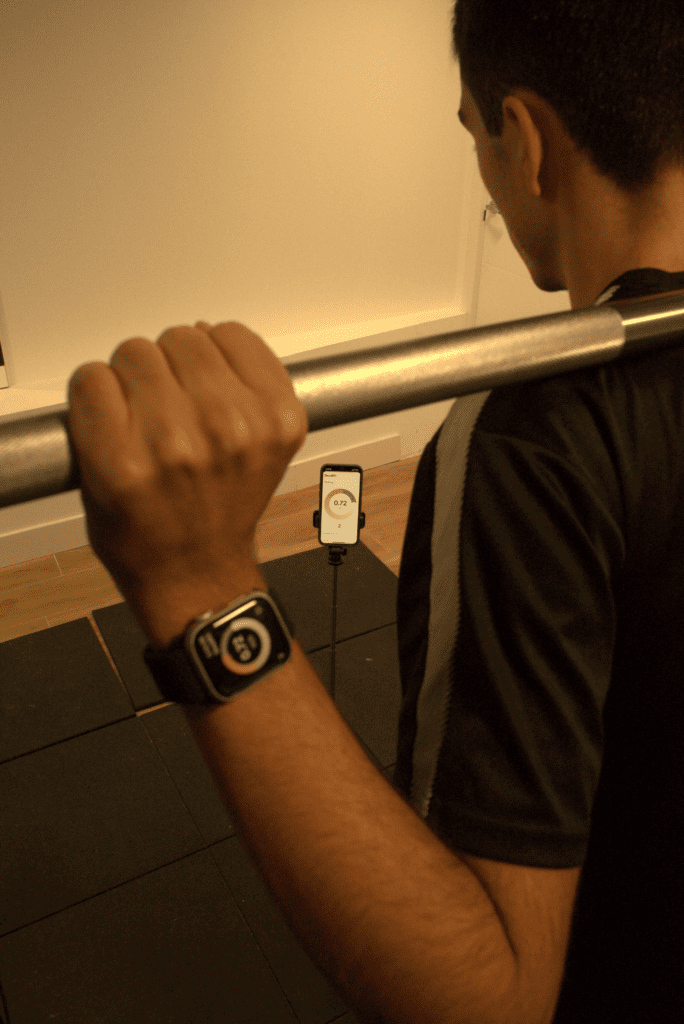
Build an individual load-velocity profile
Once you measure velocity, the ideal is to establish for each exercise and each athlete a load–velocity profile: i.e., know what average velocity corresponds to 1RM for that exercise, and what velocities correspond to different % of 1RM.
This profile allows:
- Knowing that for a given athlete and exercise, “x m/s” equals “y % of 1RM”.
- From there, calculate the absolute load (kg) matching that velocity and %1RM.
- Thus intensity is prescribed not only by %1RM but by a velocity target.
You can begin with generic profiles published in the literature for large groups or initial phases, but the ideal is to individualise to optimise programming.

5.3 Prescribe intensity via velocity target
When the athlete measures execution velocity, you can prescribe a series with a velocity target. This strategy is optimal because it allows autoregulation according to daily fatigue:
- If the athlete feels heavy/fatigued and the usual load produces a slower velocity, they can reduce load to reach the velocity target.
- If no velocity measurement is available in a moment, you can fallback on absolute load and effort character / RIR.
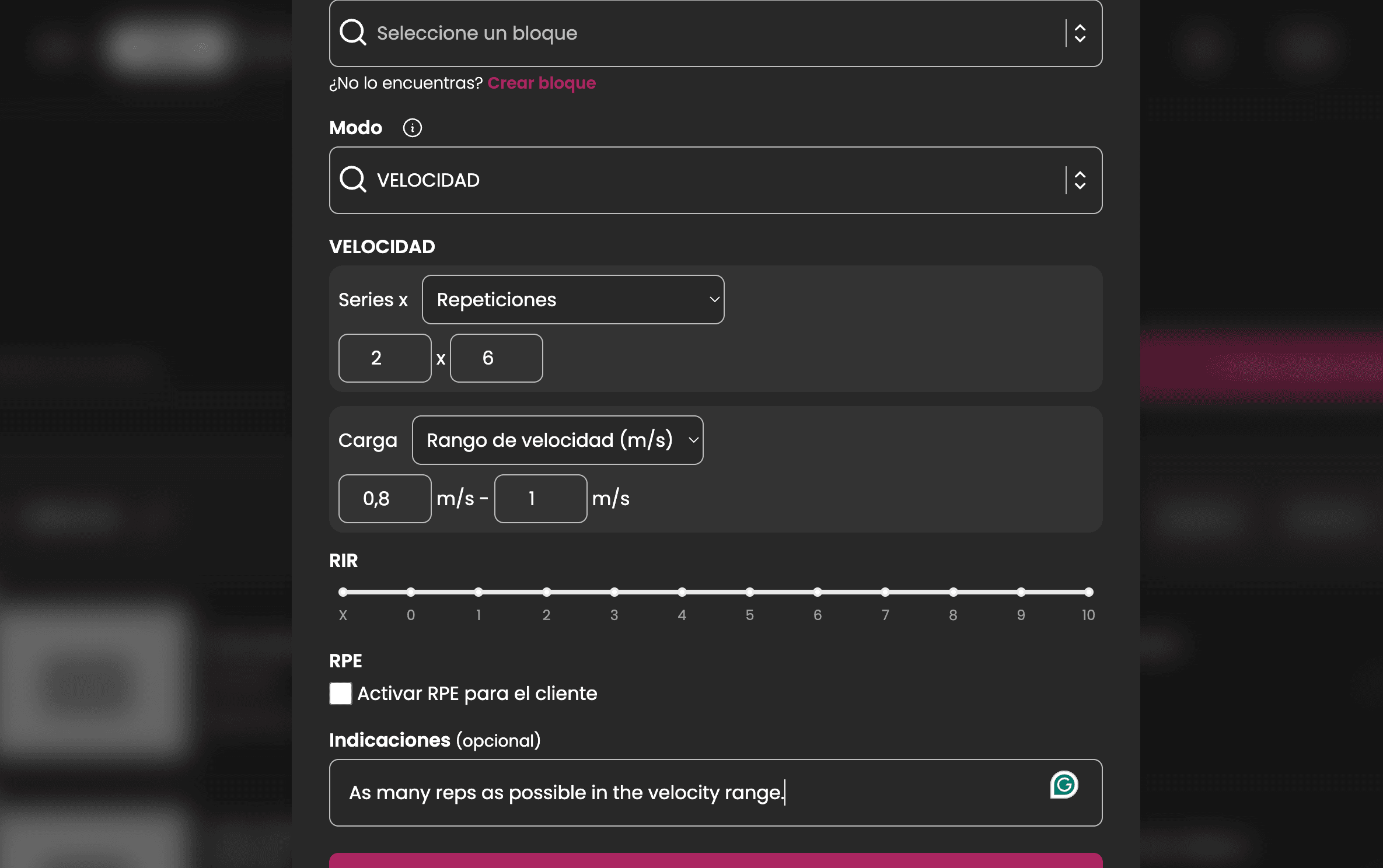
5.4 Prescribe volume via % velocity-loss or velocity interval
The number of repetitions a person can perform to failure against the same relative load varies greatly from person to person. By prescribing x number of repetitions, you can produce very different effects in each person [2]. Against de 55% for example, reps until failure in a given population goes from 20 to 40 reps. To avoid these limitations, when determining volume (number of reps, sets, etc.), two good velocity-based strategies exist:
- % velocity-loss (velocity drop): Stop the set when velocity has fallen by a given percentage (e.g., 20%) instead of prescribing a fixed number of reps. This is more reliable since each individual may perform a different number of reps with the same relative load.
- Velocity interval: Another alternative is to prescribe that all repetitions are performed within a velocity range, e.g., “do as many reps as possible between the target velocity for the intensity and 0.05 m/s below”. Although not as strongly supported in the literature yet, in practice we believe it helps autoregulate reps according to fatigue and daily variability.
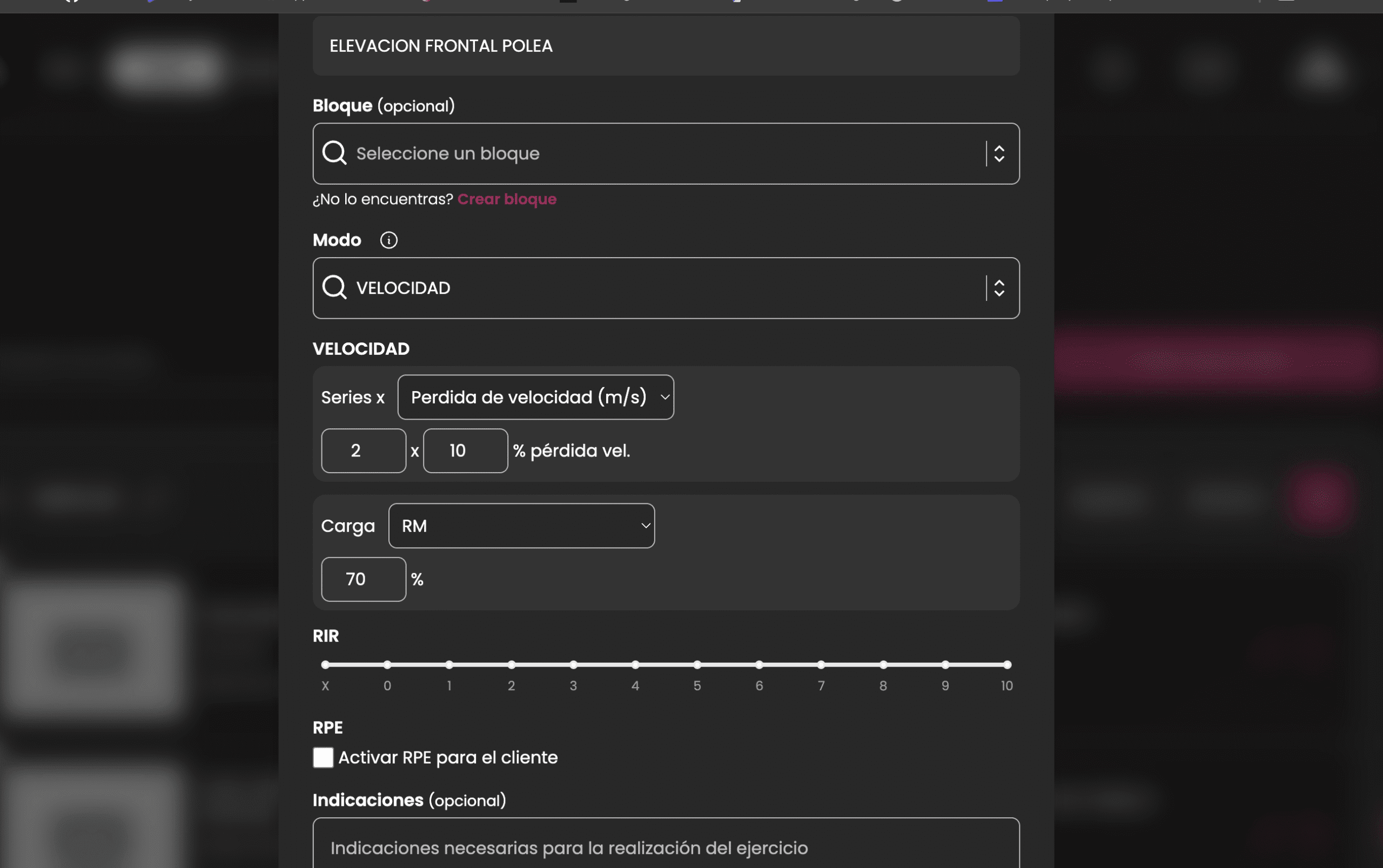
6. Long-Term Periodisation
Of course, one block alone is not enough: for medium-/long-term strength development it is essential to plan systematically. A valid methodology is linear periodisation. In this approach:
- You start from moderate relative loads (for example ~ 55 % of 1RM) with correspondingly higher velocities (because load is lower).
- Over the block you gradually increase the relative load as the athlete’s performance improves (this improvement can be observed when the athlete can handle more kilos at the same target velocity).
- Volume can remain stable or vary slightly, but the key is that intensity (or the associated velocity target) increases progressively.
- Advantages: clear progression, predictable, enables peak planning (useful in some sports). Disadvantages: may be less flexible for athletes with multiple peaks during the season or those needing high variability.
Practical example (for a cyclist aiming to train maximal strength):
- Suppose in the exercise back squat (parallel squat) his velocity at ~55% 1RM is 0.80 m/s and at that velocity he lifts 60 kg.
- During the block he works with that ~55% (≈ 60 kg) until, with the same velocity target of 0.80 m/s, he can lift 70 kg.
- Then, because he aims for maximal strength, we’d prescribe 3 sets of the squat with the load that allows ~0.80 m/s, performing all the repetitions possible between 0.80 m/s and 0.75 m/s (because our goal is maximal strength and not hypertrophy, so we permit a very low velocity-loss).
- In a subsequent block you could raise the velocity target, lower the velocity-loss threshold, or increase the %1RM.
- We’ll go deeper into periodisation in future articles.
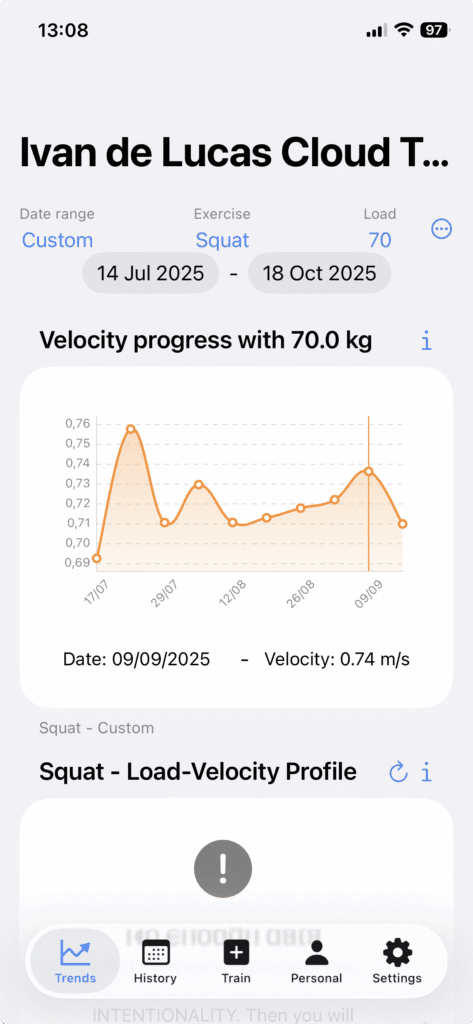
7. Practical Tools for Programming Strength via Execution Velocity and the Spleeft + Askesis Collaboration
In practice, here’s how to implement this methodology in your workflow:
- With Spleeft you can already measure execution velocities with your iPhone or Apple Watch.
- We recently launched our integration with TrainingPeaks: workouts scheduled in TrainingPeaks can sync with Spleeft. Currently, TrainingPeaks does not include specific velocity parameters, so you must include your velocity targets in the workout description.
- Alternatively, thanks to our collaboration with Askesis you can prescribe to your athletes directly via Askesis:
- % 1RM
- Fixed velocity-target values
- Velocity ranges
- % velocity-loss
- Thus, Askesis + Spleeft become a powerful combo to programme, execute and later analyse strength-training via execution velocity.
8. Conclusion
Introducing strength training via execution velocity adds an objective and professional layer to your training plans. By combining the traditional methodologies (sets, reps, fixed load; effort character; RIR) with a velocity-based approach you achieve more precise autoregulation, better fatigue management and optimized adaptive stimuli.
We’d love for you to implement this with your group/athletes and share your experiences, challenges or learnings. We’re convinced that the integration Spleeft + Askesis is going to make a difference.
References:
- González-Badillo JJ, Sánchez-Medina L. Movement velocity as a measure of loading intensity in resistance training. Int J Sports Med. 2010 May;31(5):347-52. doi: 10.1055/s-0030-1248333. Epub 2010 Feb 23. PMID: 20180176.
- Pareja-Blanco F, Rodríguez-Rosell D, Sánchez-Medina L, Sanchis-Moysi J, Dorado C, Mora-Custodio R, Yáñez-García JM, Morales-Alamo D, Pérez-Suárez I, Calbet JAL, González-Badillo JJ. Effects of velocity loss during resistance training on athletic performance, strength gains and muscle adaptations. Scand J Med Sci Sports. 2017 Jul;27(7):724-735. doi: 10.1111/sms.12678. Epub 2016 Mar 31. PMID: 27038416.
- González-Badillo, J.J., Sánchez-Medina, L., Ribas-Serna, J. et al. Toward a New Paradigm in Resistance Training by Means of Velocity Monitoring: A Critical and Challenging Narrative. Sports Med – Open 8, 118 (2022).
Iván de Lucas Rogero
MSC Physical Performance & CEO SpleeftApp
Dedicated to improving athletic performance and cycling training, combining science and technology to drive results.

